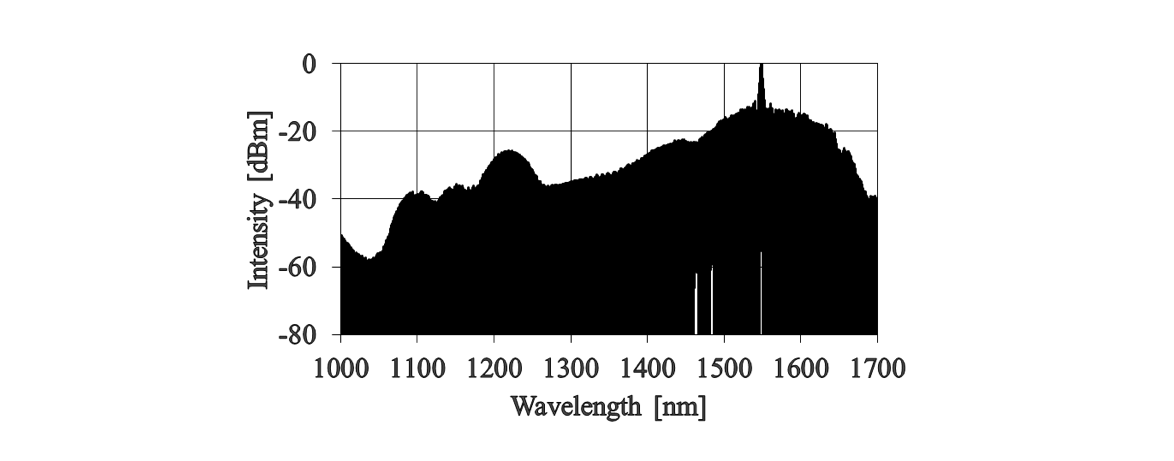Home > For Researchers > Public Research > Introduction of adoption public research ③
Introduction of adoption public research ③
Development of a super wideband optical comb generator for detecting terrestrial planets by the radial velocity method
(Takayuki Kotani / NAOJ)
Large numbers of extra-solar planets (exoplanets) have been discovered since the first exoplanet was discovered in 1995. Particularly in recent years, many Earth-sized planet candidates have been found by the Kepler Space Telescope. However no planet with the mass of 1 Earth has yet been found in the habitable zone around a fixed star close to the solar system. Therefore the most important goal for exoplanet research in the future is the detection of a planets similar to Earth in the habitable zone around fixed stars close to our solar system, in order to determine whether or not the existence of planets that could support life is a universal phenomenon.
For this reason, we have proceeded with the development of Infrared Doppler (IRD) for the Subaru Telescope, aiming to detect planets around M-class stars by the radial velocity method at infrared wavelengths. Detecting Earth-like planets requires a wavelength standard that is stable over a broad wavelength range (970 – 1,750 nm). Together with Professor Kurokawa of the Tokyo University of Agriculture and Technology, we are developing an optical frequency comb (hereafter, “optical comb”) consisting of numerous bright line spectra positioned at equal intervals over a broad wavelength range. So far, we have successfully developed one of the few wide-range optical combs in the world that covers the range of 1,200 – 1,750 nm. This study aims to adapt and improve the technology from this successful optical comb and extend it on the shorter wavelength side to create an ultra-wide band optical comb that covers all wavelengths in the range of 970 – 1,750 nm. This will achieve radial velocity accuracy of better than 1 m/s, making it possible to identify the distribution of Earth-like planets around fixed stars close to our solar system. This will lead to the validation of theories regarding the formation of Earth-like planets around low-mass stars. Identifying the distribution of Earth-like planets close to the solar system is related ultimately to future searches for signs of life by direct imaging spectroscopy of planet atmospheres. In addition, the discovery of a single planet with the mass of 1 Earth in the habitable zone is a dream of humanity that transcends the world of astronomy and would have an extremely large impact on human society. Achieving the radial velocity measurement accuracy necessary for the detection of Earth-like planets (accuracy of better than 1 m/s) requires a wavelength standard in the extremely wide wavelength range of 970 – 1,750 nm.
The main issues which must be resolved in this study are the following: (1) Extend the optical comb to shorter wavelengths down to 970 nm, and (2) install a spectrograph onto the optical comb and confirm measurement accuracy of 1 m/s or better in the laboratory and in observations with the Subaru Telescope. The optical comb is created by inputting a short light pulse into optical fiber, and we are using an original method that we developed to aim for an even wider band range.
1. Preliminary tests have shown that a special fiber with specific characteristics is effective in extending the optical comb to shorter wavelengths. Because there is a limit to short wavelengths with existing fibers, we will develop a new fiber that can support the shorter wavelengths. We have also verified that the wavelength range produced by the optical comb varies depending on the fiber type. In order to perform high-accuracy wavelength calibration, a uniform optical comb distribution is necessary, and the full wavelength range will be covered by connecting multiple fibers, each for a different range.
2. It is known that shorter wavelengths are possible by boosting the peak power of the optical pulse that is input into the fiber. Therefore we will improve the performance of the optical amplifier and pulse generator.
Figure 1 shows an optical comb that was previously produced in the laboratory. It successfully covered nearly the entire target wavelength range.
 Figure 1: Spectrum of an optical comb produced in the laboratory
Figure 1: Spectrum of an optical comb produced in the laboratory
